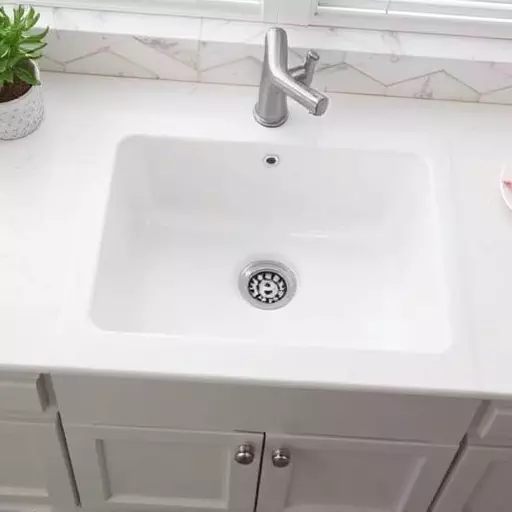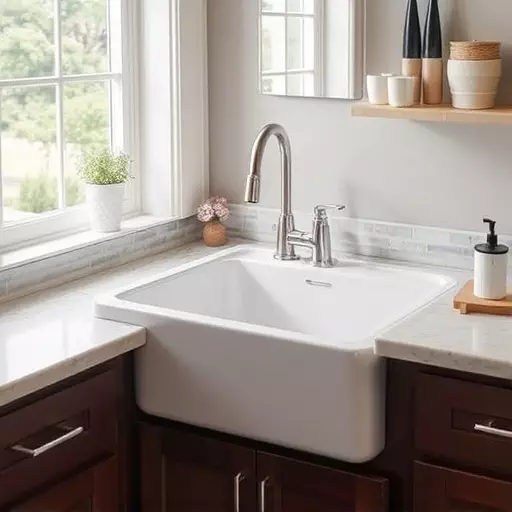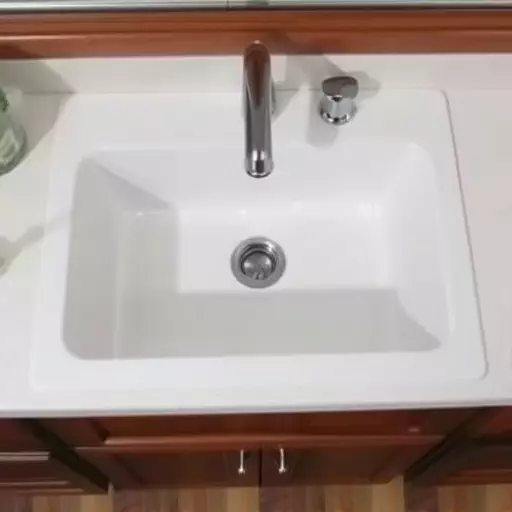This text provides an extensive guide on sink leaks, installation, and repair, focusing on both DIY enthusiasts and professional plumbers in Toledo. It identifies common causes of leaks, emphasizes proper preparation for installations, offers detailed step-by-step instructions for undermount and drop-in sinks, and recommends DIY troubleshooting tips. The key to success lies in accurate identification of leak types, precise measurements, and regular maintenance, ensuring long-lasting sink functionality with or without professional Sink Installation and Repair Toledo services.
Are you experiencing a leaky sink? Don’t panic! Understanding and troubleshooting sink leaks is easier than you think. From identifying common causes like worn gaskets or loose pipes to mastering installation techniques for both undermount and drop-in sinks, this guide has you covered. Learn the essential tools and materials needed, follow step-by-step instructions, and discover expert tips for maintaining your sink’s longevity. Master sink installation and repair in Toledo – or anywhere – with our comprehensive resource.
- Understanding Sink Leaks: Common Causes and Types
- Preparing for Sink Installation: Tools and Materials Needed
- Step-by-Step Guide to Undermount Sink Installation
- Drop-In Sink Installation: A Detailed Breakdown
- Troubleshooting Tips for Common Sink Leak Issues
- Maintenance and Prevention: Ensuring Longevity of Your Sink
Understanding Sink Leaks: Common Causes and Types

Sink leaks can be frustrating and may indicate a variety of issues, from loose connections to damaged parts. Understanding the common causes and types of sink leaks is essential for effective troubleshooting. One of the primary culprits is improper installation or worn-out gaskets and seals, especially in undermount sink installations or drop-in sinks, which are prevalent in homes across Toledo and beyond.
Other factors contributing to leaks include corrosion over time, misaligned fixtures, or subpar plumbing materials. Identifying the specific type of leak—be it under the sink, at the faucet, or around the drain—is crucial for targeted solutions. Whether you’re a DIY enthusiast or considering professional Sink Installation and Repair services, knowing these common causes will help ensure prompt and effective resolution to any sink leak.
Preparing for Sink Installation: Tools and Materials Needed

When preparing for sink installation, whether it’s an undermount or drop-in model, having the right tools and materials is essential. For sink installation and repair Toledo or anywhere else, a basic toolkit will suffice. This includes a wrench set suitable for plumbing fittings, adjustable pliers, a level, measuring tape, silicone caulk, and a putty knife. Additionally, ensure you have access to replacement parts specific to your sink model, such as drain assemblies or mounting hardware.
Gathering these sink installation and repair essentials beforehand streamlines the process. For undermount sink installation, precise measurements are crucial; use the measuring tape to determine the dimensions of the cabinet opening and compare them to the sink’s specifications. This ensures a secure fit, preventing water leaks and ensuring your new sink functions flawlessly for years to come.
Step-by-Step Guide to Undermount Sink Installation

Installing an undermount sink is a common task for both DIY enthusiasts and professional plumbers, offering a sleek and modern aesthetic. Here’s a step-by-step guide tailored to Sink Installation and Repair Toledo needs:
1. Measure and Prepare: Begin by accurately measuring the space beneath your countertop to ensure the sink fits perfectly. Remove any debris or existing fixtures, then clean the area thoroughly. This is crucial for both the fit and long-term functionality of your new undermount sink.
2. Place and Secure: Position your new sink in place, ensuring it aligns with your measurements. Use silicone caulk to create a seal around the edges, securing the sink firmly to the countertop. Be sure not to overtighten any hardware or fittings, as this can lead to damage or an uneven surface.
3. Connect Water Lines: Attach the water lines according to manufacturer instructions. Typically, this involves connecting the hot and cold water supply lines to the sink’s fittings. Double-check connections for leaks before proceeding.
4. Install Drain Assembly: Fit the drain assembly into place, ensuring all parts are properly aligned. Secure it tightly, then connect the tailpiece to the sink’s drainage system. Test the drain by turning on the water and checking for any leaks or blockages.
Drop-In Sink Installation: A Detailed Breakdown

When it comes to sink installation, whether you’re opting for an undermount or drop-in model, proper placement and alignment are crucial for both functionality and aesthetics. In the case of a drop-in sink, a detailed breakdown of the process involves careful measurement to ensure the sink fits snugly within the countertop hole. This type of installation requires precise cutting of the countertop to create a seamless fit, enhancing the overall look of your kitchen or bathroom.
The sink installation and repair process in Toledo, or any location, demands attention to detail at every step. For drop-in sinks, this includes securing the sink with clamps during the initial placement, ensuring water and drainage lines are properly connected, and sealing around the edges for a watertight fit. With the right tools and guidance, homeowners can achieve a professional-looking drop-in sink installation that serves both form and function.
Troubleshooting Tips for Common Sink Leak Issues

When faced with a leaky sink, quick action can prevent minor inconveniences from turning into major headaches. For those in the Toledo area, professional help is readily available through expert sink installation and repair services. However, before calling a pro, there are several troubleshooting tips worth considering to identify and potentially resolve common sink leak issues yourself.
First, inspect the sink for any loose connections, especially around the faucets and drain areas. Tighten any loose parts using the appropriate tools. Next, check the gaskets and seals on both drop-in and undermount sinks. These can wear out over time and are often the culprit behind leaks. Replacing them is a straightforward DIY project that can effectively stop water seepage. Lastly, don’t overlook potential issues with the supply lines or drain pipe connections, which may require professional attention for proper repair.
Maintenance and Prevention: Ensuring Longevity of Your Sink

Regular maintenance and preventive measures are key to keeping your sink in top condition and avoiding costly repairs or premature replacements, especially when it comes to sinks installed by experts like those at Sink Installation and Repair Toledo. Undermount and drop-in sink installations require different care routines, but both are crucial for longevity.
For undermount sinks, periodic cleaning of the seal and gaskets is essential to prevent leaks. This involves using mild detergent and avoiding abrasive materials that could damage the finish. Drop-in sinks, on the other hand, benefit from regular sealing to ensure water tightness. Additionally, checking for loose connections or damaged components can help catch potential issues early, reducing repair needs and ensuring your sink continues to serve you well over time, whether it’s a new installation or an old one that requires Sink Installation and Repair services.


